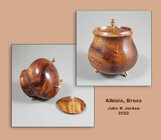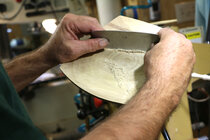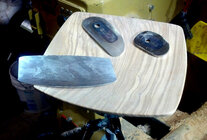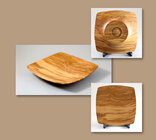When I was first starting to turn 30yrs ago I remember reading a comment from Raffan about form. The words were different, but what stuck with me is 'When turning bowls form is what counts, wood tones and grain mellow but form is what you'll see as the years go by.' I think of this often when turning a bowl, or just admiring them.
I was reminded again of Raffan's advice this morning when browsing the Photo Gallery. I've been traveling and away from turning for the last 5 months. This morning I decided to browse the last few hundred pictures in the gallery. I did this in ~10min, only stopping to pause a handfull of times and poke into the picture to examine and learn more. As I was doing this I started thinking about what drew me into various pictures; it was almost always good clean lines and form. Sometimes a clever interpretation or unique turning caught my eye, but I was on to the next in seconds unless the form drew me in.
Not surprisingly, the same names often popped up as I poked into the pictures. We have some wonderful turners that regularly inspire us on this forum. Thanks!
I was reminded again of Raffan's advice this morning when browsing the Photo Gallery. I've been traveling and away from turning for the last 5 months. This morning I decided to browse the last few hundred pictures in the gallery. I did this in ~10min, only stopping to pause a handfull of times and poke into the picture to examine and learn more. As I was doing this I started thinking about what drew me into various pictures; it was almost always good clean lines and form. Sometimes a clever interpretation or unique turning caught my eye, but I was on to the next in seconds unless the form drew me in.
Not surprisingly, the same names often popped up as I poked into the pictures. We have some wonderful turners that regularly inspire us on this forum. Thanks!




